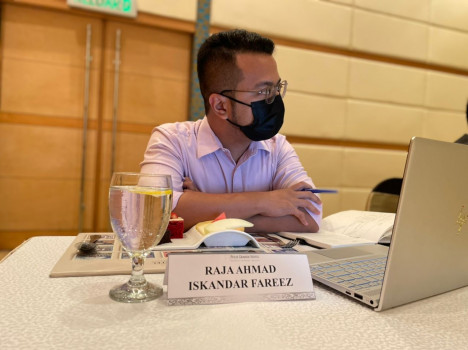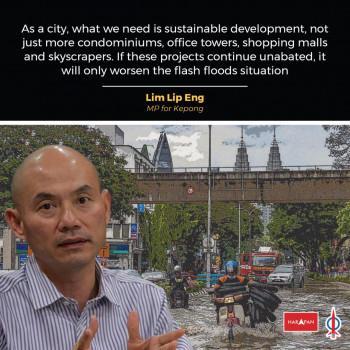By Pauline Wong
A good friend of mine passed away last July. She had neurofibromatosis, (NF), a debilitating disease which until today, I do not fully understand. She had fought the disease that threatened to kill her since she was 12 years old, until she was 26.
In the end, it was a cold that broke her, and she passed away peacefully on July 3.
At the time, I had thought to write a story to celebrate her courage instead of mourning her death, but it got overtaken by other things, I am ashamed to admit, until recently, when a Facebook post from a local celebrity of sorts went viral.
Maya Tan Abdullah, who according to her profile is an actress and producer, had complained in a post that a person with Tourette’s Syndrome had been making noises during a show.
Her long diatribe included suggesting that those suffering from Tourette’s to “ask permission from theatre producers before attending a show” or “gag” themselves, or at the least “bring a pillow to bark into”.
Her insensitive remarks drew a lot of flak, including from theatre legend Joe Hasham, who called her out on it.
“I don’t think either of these individuals understand the mental and physical pain and suffering that a Tourette’s sufferer has to endure,” he wrote. He added: “Maya, shame on you. You should know better.”
Tourette Syndrome, also called Tourette’s Syndrome is little known here and is a neurological condition that causes the sufferers to exhibit what are called ‘tics’, that they have little control over. The ‘tics’ could include involuntary noises, movements or actions. There is no known cure for it, and while the tics can be managed with therapy and medication, it cannot be stopped completely.
But the outrage over her remarks did not come close to the outrage that people demonstrated over things like, say, the taking down of a cross at a church, or the word “church” on the foil cover of a box of dipping sauce in a popular fried chicken joint.
In fact, some years ago, when a story broke of the large difference between the rewards offered to Paralympic athletes in comparison to other athletes, nobody was outraged enough to take to the streets to demand equality.
This is the invisibility of disability.
The first is the disability itself which is outwardly invisible — that is, it does not manifest in a physical way, like a wheelchair or a crutch— like Tourette’s, which the person Maya Tan complained about suffered from.
An invisible disability means illnesses or conditions which impair a person’s ability to function ‘normally’, or causes constant fatigue or debilitating pain.
But far more disturbing is the invisibility of all disabled persons in general.
From public spaces to public transportation, very little is available to accommodate the differently-abled.
Even a simple thing like lights which flash orange when train doors are opening and closing to assist the hearing-impaired are not available on all trains, and frankly, pavements and walkways are hazardous for anyone navigating it on a wheelchair.
My friend used to face such difficulties whenever she had to go anywhere. Even though she had a nifty power wheelchair that could go 2 miles/hour (thats about 5km/h), doorways were almost always too narrow, and stairs insurmountable.
And how about those who cannot work, who live on aid?
Recently a group of wheelchair users pleaded with the government not to impose the Goods and Services Tax (GST) on wheelchairs or other medical devices such as prosthetic limbs. Their pleas fell on deaf ears.
It’s funny, how perfectly hearing and seeing officers and ministers suddenly turn deaf and blind to their plight.
However, this happens all the time. There are some 445,006 Malaysians living with disabilities today according to Unicef, but since this number only counts those who register with the Welfare Department voluntarily, it does not reflect the true number in the country.
While Malaysia has taken an important step to protect the rights of people with disabilities by ratifying the Convention on the Rights of Persons with Disabilities (CRPD) in 2010, it is not a binding contract of any kind.
The Persons with Disabilities Act 2008 provides a certain amount of protection, but again, none of these are compulsory — a building contractor or architect is not bound by law to provide wheelchair access, for example.
It merely states that persons with disabilities shall have the right to access public facilities, healthcare, education and more — but one look at many buildings and public spaces, and you would know such rights are not met.
And, if a person living with disability is denied such a right, he or she cannot do anything about it either, because Malaysia did not sign on the optional protocol in the CRPD. That optional protocol would have allowed a disabled person to raise to an international body, any violation to his or her rights.
However, even if the law had been in place, the challenge of public awareness is an even greater hurdle. Until people like Maya Tan have seen for themselves how absurdly difficult it is for a person in a wheelchair to even get on a bus, or go to the washroom, or enjoy a day in the park — public consciousness will ruin even the best legislative avenues.
Let’s not pretend anymore that people with disabilities are not ‘our problem’, and start putting public pressure on both the government, and ourselves, to ensure that they get what every one of us take for granted.





